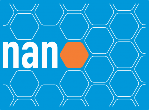Banca de QUALIFICAÇÃO: MARCELO BRUNO DE OLIVEIRA SILVA
Uma banca de QUALIFICAÇÃO de MESTRADO foi cadastrada pelo programa.STUDENT : MARCELO BRUNO DE OLIVEIRA SILVA
DATE: 27/09/2022
TIME: 14:00
LOCAL: On line
TITLE:
CHITOSAN AEROGEL WITHOUT AND WITH MICROCELLULOSE FOR REMOVAL OF POTENTIALLY TOXIC METAL IONS IN WASTEWATER
PAGES: 111
BIG AREA: Outra
AREA: Multidisciplinar
SUMMARY:
Among the emerging contaminants found in aquatic environments, potentially toxic metal ions are of great concern due to their potentially devastating effect on the environment. In this sense, this work aimed to develop chitosan aerogels without and with cellulose structures, using residual chitosan from crustacean exoskeletons, aiming at the production of these environmentally friendly and economically attractive aerogels, linked to the revaluation of waste from the fishing industry. The development of the aerogel was carried out in three stages. Using a chemical method, chitosan was initially obtained from the shrimp exoskeleton. In the second stage, microcellulose was obtained from eucalyptus residue. Finally, chitosan composite aerogels without and with microcellulose were developed by crosslinking with glutaraldehyde, followed by drying by lyophilization. The developed chitosan showed a high degree of deacetylation (93%). In addition, the microwave deacetylation process presented time and energy savings compared to the conventional method. The cellulose isolation treatment allowed the removal of lignin and hemicellulose. The combined shear action of a blender and high-intensity ultrasonication allowed obtaining microcellulose with good stability in suspension. The aerogels developed showed irregular and interconnected pores, favoring high surface area. It is noteworthy that the incorporation of microcellulose allowed greater thermal and mechanical stability to the aerogels. The evaluation of the adsorption of Cr6+ ions confirm the viability of applying aerogels to treat contaminated water. The aerogels allowed removal between 44 and 81% after one hour, and between 96 and 100% after 24 hours of contact with the ions in an aqueous solution at pH 5.0, from the initial concentration of 15 mg.g-1.
BANKING MEMBERS:
Presidente - Interno ao Programa - 1676364 - JULIANA MARCHI
Membro Titular - Examinador(a) Interno ao Programa - 1761120 - DANILO JUSTINO CARASTAN
Membro Titular - Examinador(a) Externo à Instituição - ALEXANDRE TADEU PAULINO - UDESC
Membro Suplente - Examinador(a) Interno ao Programa - 1760410 - JEVERSON TEODORO ARANTES JUNIOR
Membro Suplente - Examinador(a) Interno ao Programa - 1707133 - ISELI LOURENCO NANTES CARDOSO
Membro Suplente - Examinador(a) Externo à Instituição - HELIO WIEBECK - USP
Membro Suplente - Examinador(a) Externo à Instituição - ELISABETE FROLLINI - USP




